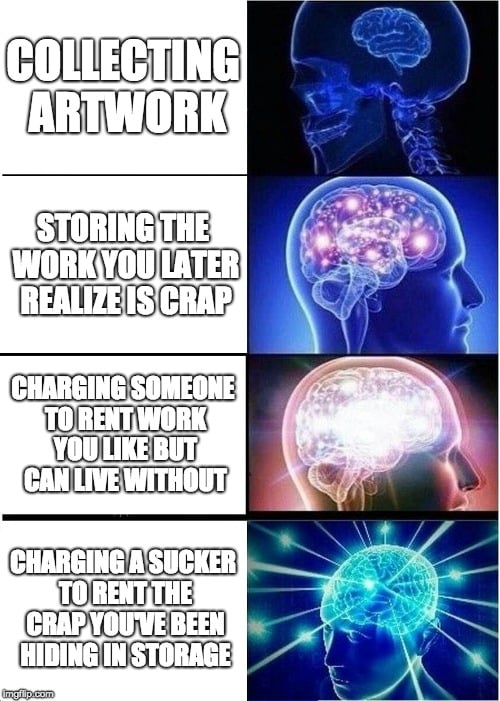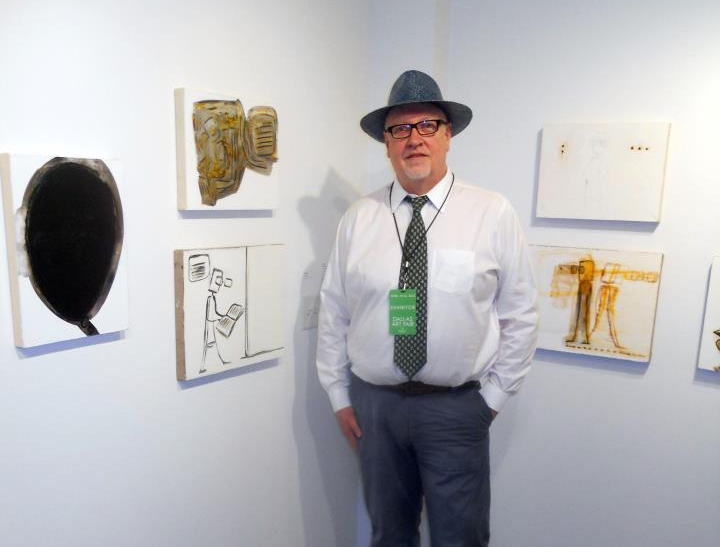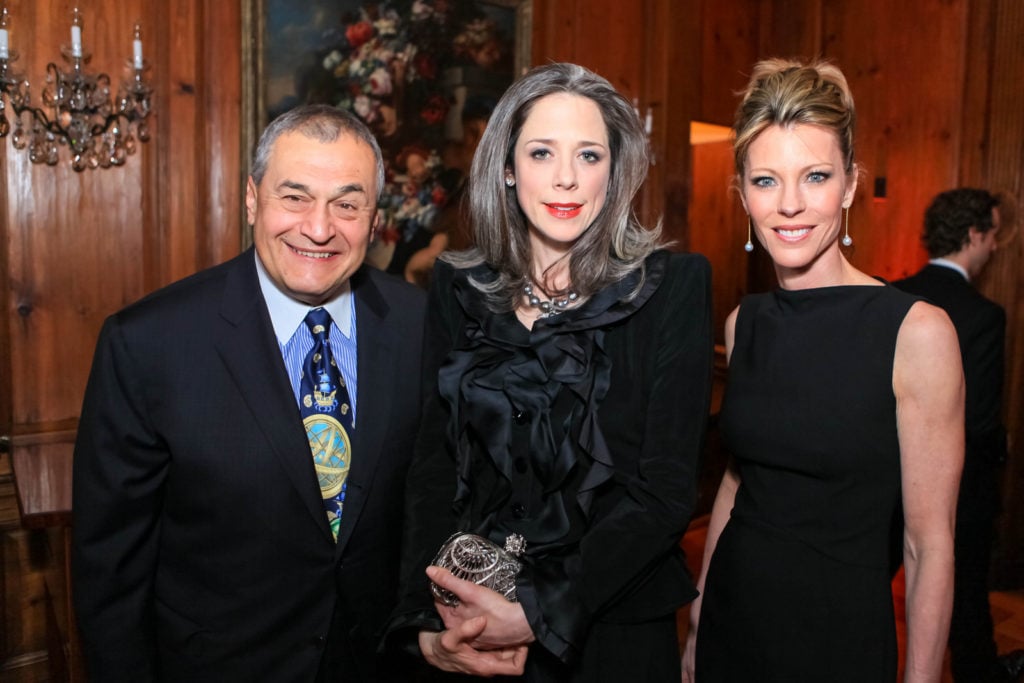Every Monday morning, artnet News brings you The Gray Market. The column decodes important stories from the previous week—and offers unparalleled insight into the inner workings of the art industry in the process.
This week, two reminders that our values—meaning numbers and principles—can get us into all kinds of trouble…
THE RENT IS TOO DAMN HIGH
On Wednesday, Brody Mullins and Julie Bykowicz of the Wall Street Journal delivered an in-depth account of how Tony Podesta, the voracious collector and one-time liege of neoliberal lobbying, recently fell from grace. Podesta’s sprawling art holdings play a major role in the saga, threading through everything from the scale of his success to the grounds for his latest divorce to some highly questionable business decisions at his DC firm.
The last of these nodes is the one I want to stay attached to. According to Mullins and Bykowicz:
The Internal Revenue Service determined that in 2007 and 2008, the Podesta Group paid more than $300,000 for the shipping and handling of art bought by Mr. Podesta—money that was improperly reported as a business expense, according to documents viewed by the Journal. Later, Mr. Podesta began billing his firm $360,000 a year to rent pieces displayed at the office. The firm also paid part of the salary of Mr. Podesta’s art curator.
If your business has nothing to do with art, reporting shipping and art handling charges as a business expense looks bad. Directing the firm to subsidize the cost of a personal curator, I would argue, is worse, even if part of the curator’s ongoing job is to switch around the works installed at your office (not that your clients care about what’s on the walls, by the way).
But charging an average of $30,000 a month to the company you own for the privilege of showing your collection is, in my opinion, the worst of all of these. And I feel confident saying as much because, without getting myself into trouble, I’m very familiar with this tactic.
Obviously, Podesta benefited from converting a small subset of his artworks into a five-figure cash infusion every month. But let’s focus on two more subtle ways a deal like this could personally enrich a collector who also happens to be in a position of power at the company leasing the art.
First, there’s the storage issue. Granted, Podesta had a real estate “portfolio” that once included properties in DC, New York, Virginia, Venice, Sydney, and Tasmania. While he gave up some fraction of his 1,300-piece collection in his 2014 divorce settlement, Mullins and Bykowicz report that he retained “most” of it.
Now, maybe every one of those properties was the size of Versailles, and/or the rooms inside each were so crowded with works that they would’ve forced a claustrophobic to start gasping into a paper bag. Technically, I can’t rule out these possibilities.
But if these scenarios were not the case, then the majority of the pieces Podesta owned were in a climate-controlled warehouse most of the time. Which in turn would have meant they were bleeding him of cash from inside the cozy darkness of their crates every 30 days. By paying a sizable monthly fee to show works that would otherwise have been in paid art storage, then, Podesta’s firm would have been enriching him twice over.
Now, maybe the works on view at Podesta’s offices were also perpetually decent-to-excellent in quality. And it is conceivable that this arrangement could be cheaper, in the short-term, than if the firm bought comparable works to build a true corporate collection. But let’s consider a hypothetical situation in which the collector leasing his works to his company is a true scumbag. Without oversight, he could easily Galaxy Brain his way to this ethical travesty….

Safe to say this deal would be a pretty problematic, right?
The second issue with in-house art-rental agreements is valuation. To be clear, the art industry includes many highly scrupulous, highly professional art appraisers. But as I’ve detailed at length before, the valuation process also has a dark side—or at least, a severely self-interested one.
Without belaboring the minutiae here, it’s nearly a mortal lock that Podesta and his firm reached the $360,000 annual rental fee based on an appraised value for the artworks. I’m going to go ahead and assume that said appraised value was determined by a principled, knowledgeable, and genuinely independent professional, because that would be the proper way to handle it.
But let’s return to the worst-case hypothetical. If a true scumbag were offering cash money to any appraiser with half a pedigree to validate an exorbitant valuation for his collection, finding a willing partner would take about as little time as finding an instance of revolting hygiene in the average men’s locker room.
This means an unprincipled collector can quickly inflate an artwork rental fee far beyond what’s reasonable. Even better, once a sucker starts paying that (exorbitant) rental fee, it creates a feedback loop of valuation—one that can benefit the collector in other contexts.
For example, suppose some rookie art handler loses control of a forklift and impales a piece that was once in the art-rental pool, and the owner needs to fight with an insurance company over its replacement value. Or say the collector is looking to resell a work once in the art lease, and the potential buyer feels the asking price is too high.
In either case, the scheme above gives the collector added firepower in the battle. He doesn’t just have a professional appraisal affirming his favored valuation. He also has proof that someone was willing to pay actual money in line with that appraisal. It’s not a slam dunk by any means, and any savvy counterparty will suspect the boondoggle. But every little bit of ammunition helps.
To be clear, I’m not saying Podesta played either of these tricks, particularly in their worst form. I’m only saying that, if he’d wanted to, all the necessary components were within his reach. That’s why any time you hear of a collector charging his own company a fee to rent his artwork, the needle on your “conflict of interest” meter should threaten to snap off.
[The Wall Street Journal]

Clyde Beswick of CB1 Gallery, at the Dallas Art Fair. Photo: CB1 Gallery Facebook.
RISK VERSUS REWARD
On Tuesday, 13 artists once affiliated with Los Angeles’s CB1 Gallery published an open letter accusing co-founders Clyde Beswick and Jason Chang of “consistently” failing to pay money owed from sales, as well as selling consigned works without notifying the responsible artists.
The letter’s signatories divide themselves into two groups. The first consists of nine artists “currently affected by the gallery’s mishandling of its business (with outstanding receivables from sales as far back as 2012).” The second consists of four artists “previously affected” by the same alleged malfeasance “and others who sign in solidarity with those affected.”
My colleague Brian Boucher reported that Emily Davis Adams, a member of the gallery’s roster and the open letter’s “currently affected” group, estimated CB1’s founders owe “in excess of $90,000 based on her conversations with disgruntled artists who have worked with the gallery.” Two other signatories—Michael Mancari and Brett Reichman—have already brought civil suits seeking damages of over $111,000 combined.
Beswick responded to all initial press inquiries with a written statement that he and Chang “are working hard to resolve any and all issues with the artists whose work we have shown.”
But that work became even harder on Friday, when Beswick confirmed to the Los Angeles Times that CB1 will shut down when its current exhibitions end on May 19. He centered the blame on “slow sales” and “cash flow issues” stemming partly from the gallery’s 2015 move to a larger, more ambitious space in the city’s Arts District.
To me, though, the most telling aspect of this saga has to do with a different type of risk. As every piece written about the CB1 scandal has noted, Beswick served more than 13 months in county jail and state prison after a 1997 conviction for embezzlement and tax fraud—a fact first reported in Carolina Miranda’s 2015 profile of the gallerist ahead of CB1’s Arts District debut.
This means that every artist who joined forces with Beswick and Chang knew they were dealing with a former white-collar criminal. And yet, they still hopped into bed with the gallery faster than a dude concerned his Cialis is about to wear off.
To be fair, people in plenty of other industries willfully overlook legal damnation for the sake of upside all the time. For example, outside investors handed over $3 billion to hedge-fund kingpin and auction-house aphrodisiac Steven A. Cohen’s Point72 Asset Management last month—just weeks after the expiration of Cohen’s SEC-imposed ban on accepting outside money due to insider trading at his last fund. (Cohen was penalized for his failure to properly supervise the offenders under his roof; he was never personally charged with wrongdoing.)

Steven Cohen. Courtesy photographer Billy Farrell, © Patrick McMullan.
But the gallery business elevates this tendency to overlook past indiscretions to another level. Crucially, Beswick and Chang appear to have had plenty of options in the talent pool even while their artists were vocalizing their current nonpayment problems. This excerpt from Boucher’s exchange with Emily Davis Adams is revealing:
Adams says that a number of artists have even asked her for an introduction to CB1 Gallery despite the allegations of misconduct. “They tell me, ‘I’d rather show my work even if I don’t get paid,’” she says.
Setting aside the legal implications, this phenomenon speaks to the enduring appeal of the brick-and-mortar gallery. While exceptions exist, the vast majority of artists still want to have actual physical shows in actual physical spaces, where their work can be experienced in its full glory—not to mention supercharged by the old-fashioned fanfare of special events and social exchange.
Artists also generally want the reputation upgrade of being represented by someone who operates, or at least has access to, one (or more) of these spaces. And they want both of these things so badly that they’re willing to put themselves at serious risk of being played for fools.
In Beswick’s case, this lure wasn’t just so powerful that artists were willing to excuse previous lawlessness for the opportunity to exhibit. It was also powerful enough to convince them to stay silent about suffering (to quote the open letter) financial “abuse” categorized as “systematic” for years.
As big a booster as I am for innovation’s place in the art industry, then, the CB1 melodrama reinforces the likely limits of change. If you want to bet against the tangible gallery, then you also have to bet against the creative impulse that enables deadbeat behavior like the kind Beswick and Chang’s artists are now alleging.
True, the root cause of such gallerists’ financial troubles can be, and often is, deadbeat buyers. But the list of agreement-breaking, non-paying gallerists in the trade’s history is still long enough to justify holding onto your chips when those wagers go live.
[Los Angeles Times | artnet News]
That’s all for this week. ‘Til next time, John Ashbery said it best: “Take care of values. The rest is shopping / raiding the islands / for what little coral they possess.”












